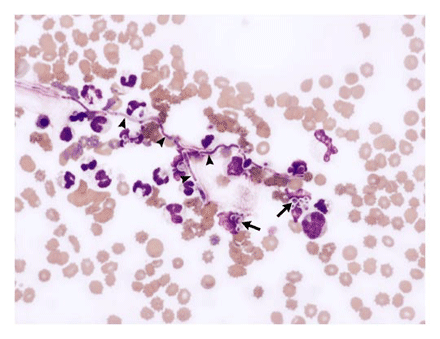ความคิดเห็นทั้งหมด : 2
A premature infant was clinically unstable Picture: peripheral blood smear of an infant. A male infant was born at a gestational age of 26 weeks and weighed 830 g. He required intubation and was transferred to the neonatal intensive care unit. His treatment included assisted ventilation, surfactant, catheterization of the umbilical artery and vein, intravenous fluids, and broad-spectrum antimicrobial agents. On the fifth postnatal day, the infant became clinically unstable, and a review of his peripheral-blood smear showed....... 1. What is the diagnosis? 2. What is the drug of choice? Posted by : chpantip , E-mail : (chpantip@medicine.psu.ac.th) , Date : 2008-06-25 , Time : 15:28:03 , From IP : 172.29.3.159 |